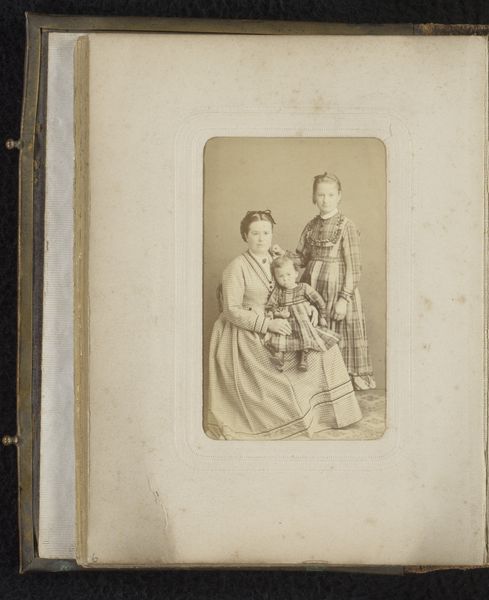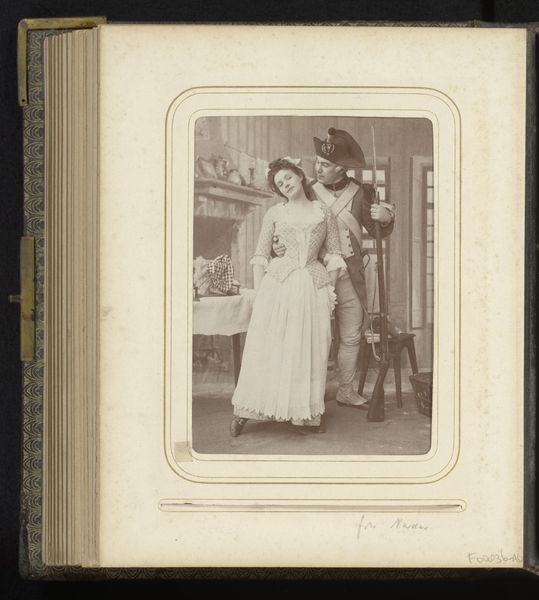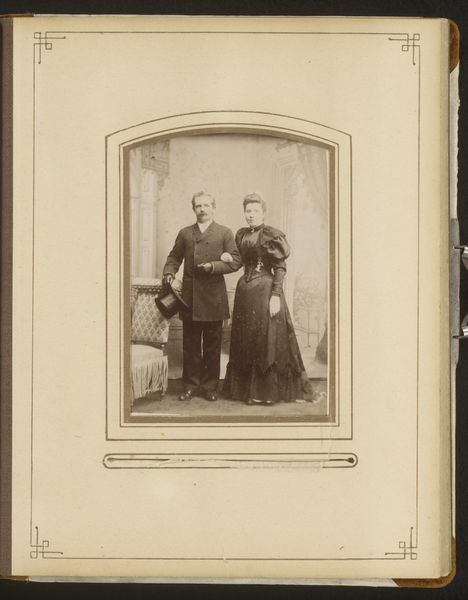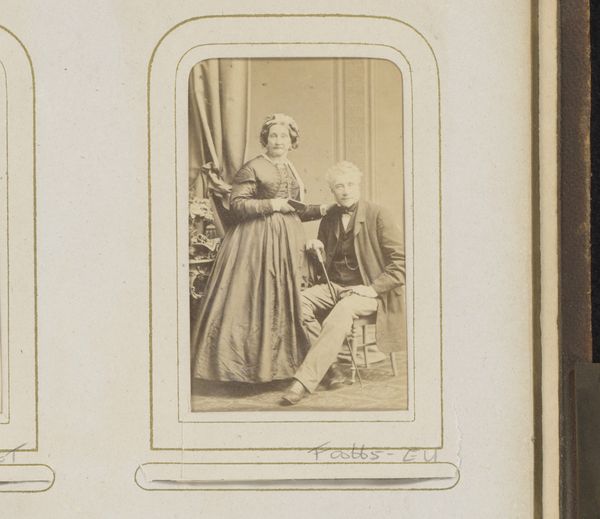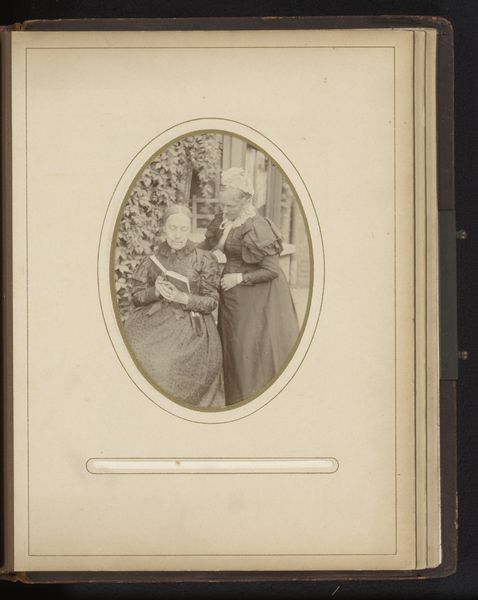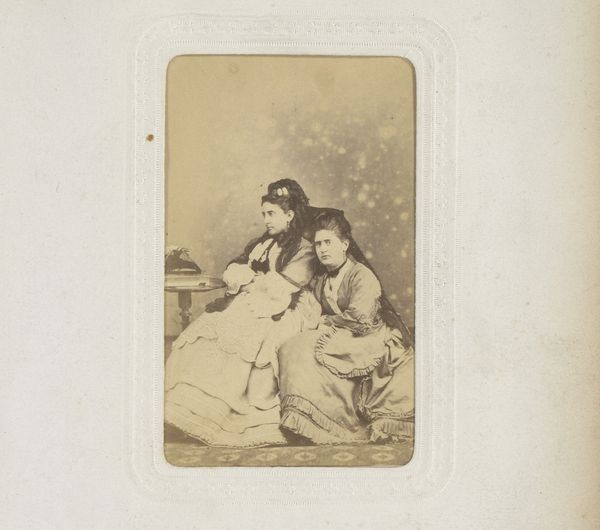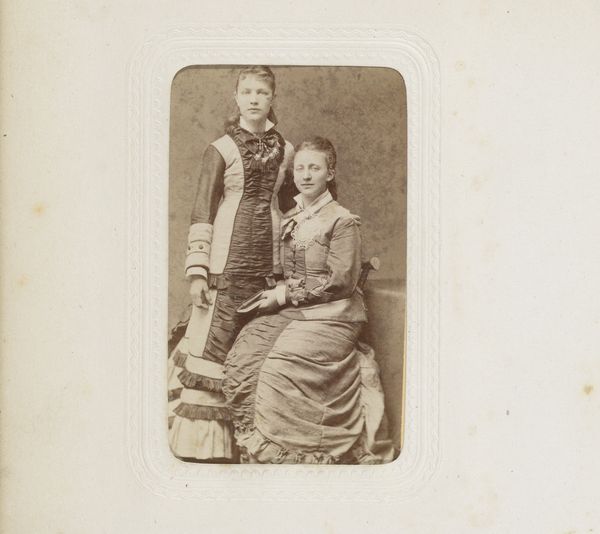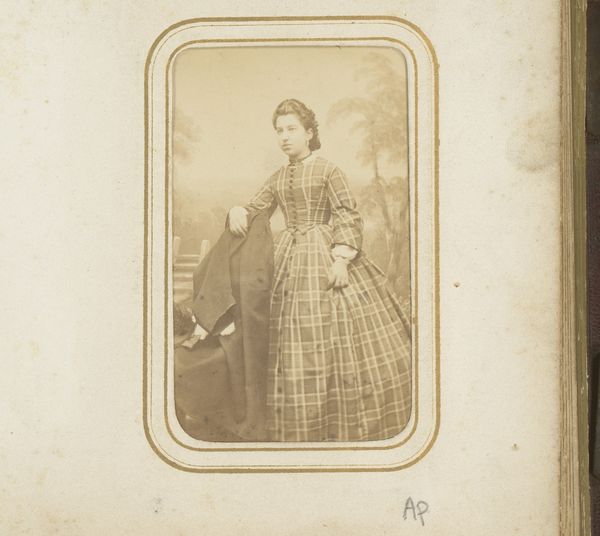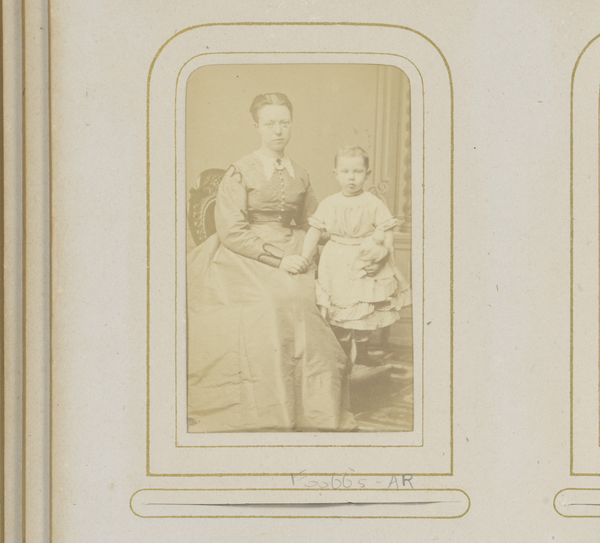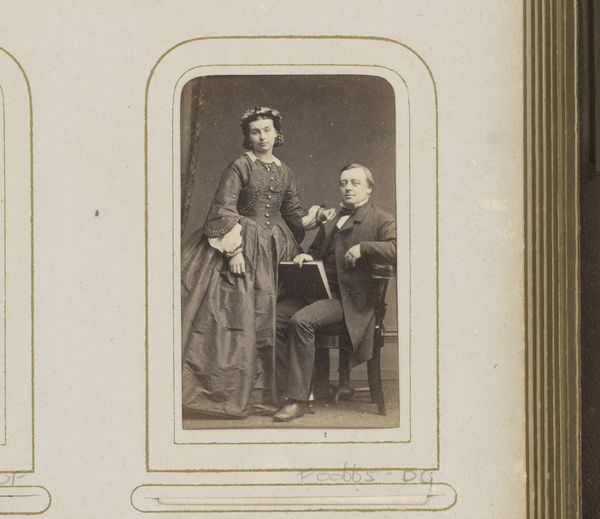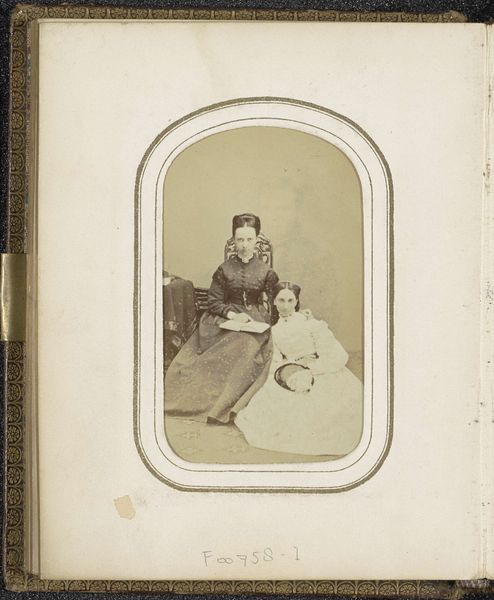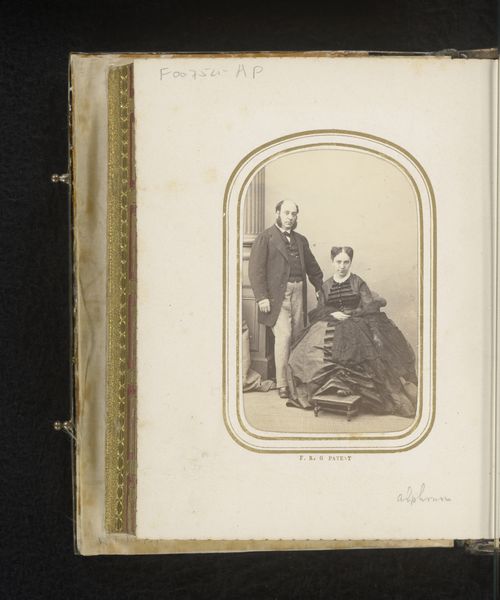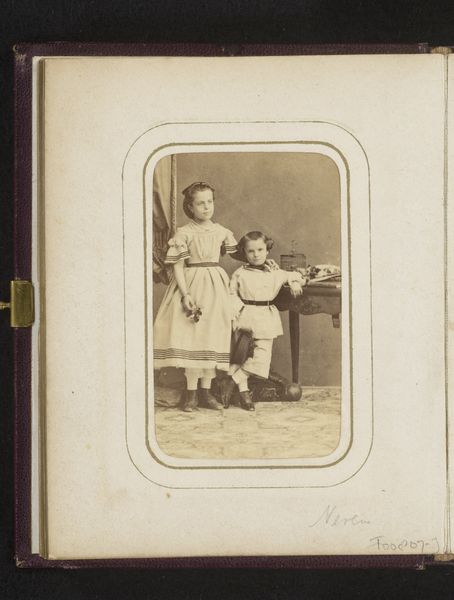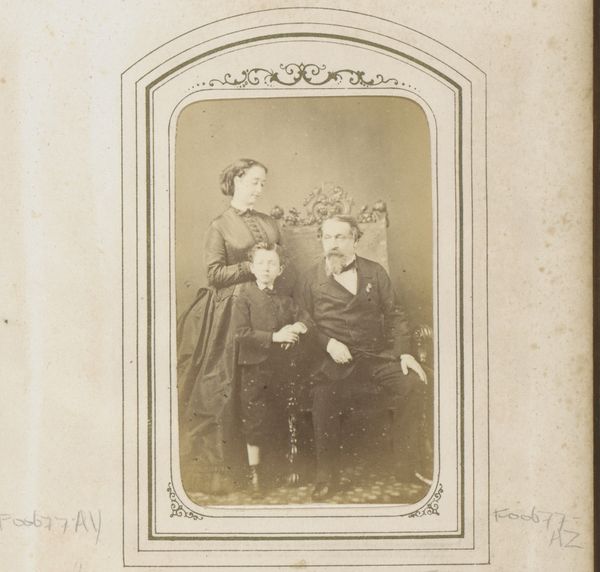
Portret van een zittende man en vrouw in kostuum voor een decor 1860 - 1900
0:00
0:00
Dimensions: height 87 mm, width 53 mm
Copyright: Rijks Museum: Open Domain
Editor: We're looking at a photograph from between 1860 and 1900, entitled "Portret van een zittende man en vrouw in kostuum voor een decor," or "Portrait of a seated man and woman in costume before a backdrop." I find it so staged and romanticized. What’s your take on this staged portrait? Curator: Well, looking at this through a historical lens, these studio portraits offered a powerful means of social positioning. Photography was still relatively new and thus somewhat exclusive. Costume becomes particularly fascinating here; is it 'national' dress worn proudly, or is it a masquerade, a way to play at identity? Editor: That’s an interesting point about identity. Do you think that this type of performative imagery shifted how people viewed themselves, perhaps solidifying emerging ideas of nationality? Curator: Exactly! This image would have circulated, shaping perceptions and contributing to a visual culture where constructed identities were consumed and emulated. Consider the backdrop; is it a specific locale, or an idealized version? And who decided what 'traditional' costume was, and who had access to it? The photo acts almost as a form of early advertising, shaping perceptions. Editor: So, it’s not just a simple portrait of a couple. Curator: Not at all! It reflects social aspirations, national identity formation, and the power dynamics inherent in image making. It makes you think about what images of people today might suggest to people centuries into the future. Editor: I see. This conversation has made me think a lot deeper about staged photography than I ever had before. Thank you for helping me look beyond the surface! Curator: It was my pleasure. Reflecting on the broader historical implications often unlocks a work's most compelling secrets.
Comments
No comments
Be the first to comment and join the conversation on the ultimate creative platform.
